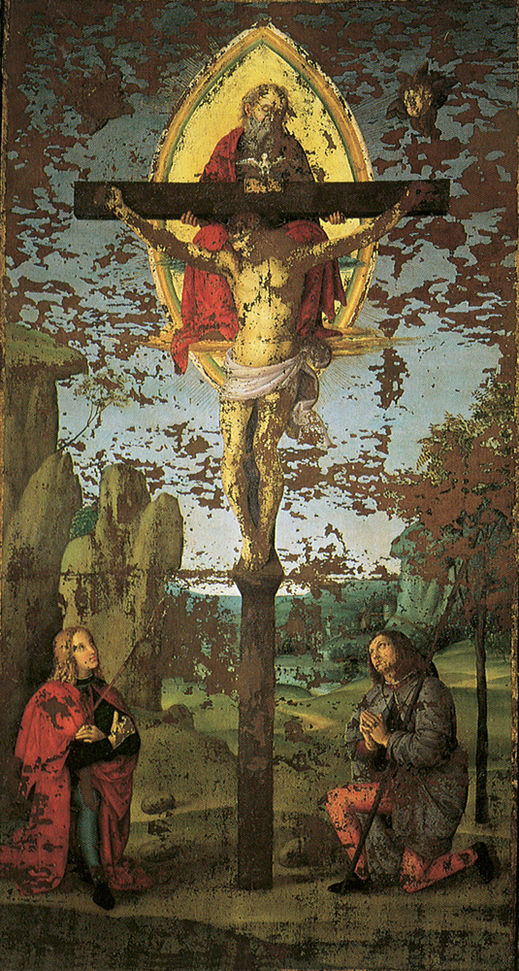The Holy Trinity with saints Sebastian and Roch
Story
The processional banner comes from the 14th-century church of Santa Trinità in via della Fraternita in Città di Castello.
On one side is represented the Trinity with the saint Roch and Sebastian, on the other the Creation of Eve from Adam’s rib and two angels.
The date of the piece is uncertain. For someone it was made in 1499, year of a terrible outbreak of plague in the town.
The presence of the two saints, Roch and Sebastian, may confirm this version, because in the traditional iconography they are invoked against the plague.
According to this hypothesis, the banner would be the ex voto made after the plague and should be considered the first Raphael’s work in Città di Castello.
Others, believed that it was made around 1502, after the altarpiece of Saint Nicholas of Tolentino for the Baronci chapel in the church of Sant’Agostino.
The banner was first mentioned in 1627, when it was also attributed to Raphael for the first time.
The critics haven’t always agreed on the attribution but there are at least two working drawings signed by Raphael and related to the piece. One of these shows the figure of the Father in the Creation of Eve and is preserved in Oxford.
Usually the images are painted on both side of one banner, while in this case the two images are painted on two different canvases then sewn or glued together.
According to the sources, the banner had been carried in procession by the confreres until 1627, when it was decided to split the canvases to preserve them from abrasion and to put them on the two altars on both sides of the church of Santissima Trinità to guarantee a better conservation. The canvases were removed in 1855 and in 1912 became part of the collection of the Pinacoteca.
The standard underwent different restoration works. In 1952 the Istituto Centrale per il Restauro di Roma (ICR) has removed the additions that weren’t made by Raphael, refining the painting gaps with the distinctive colour red-brown, similar to the one of the nude canvas that today we can admire.
